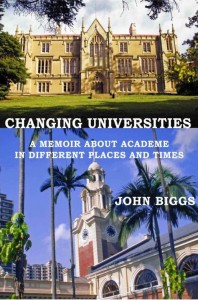On Exactitude in Science . . . In that Empire, the Art of Cartography attained such Perfection that the map of a single Province occupied the entirety of a City, and the map of the Empire, the entirety of a Province. In time, those Unconscionable Maps no longer satisfied, and the Cartographers Guilds struck a Map of the Empire whose size was that of the Empire, and which coincided point for point with it. The following Generations, who were not so fond of the Study of Cartography as their Forebears had been, saw that that vast Map was Useless, and not without some Pitilessness was it, that they delivered it up to the Inclemencies of Sun and Winters. In the Deserts of the West, still today, there are Tattered Ruins of that Map, inhabited by Animals and Beggars; in all the Land there is no other Relic of the Disciplines of Geography.
Suarez Miranda,Viajes de varones prudentes, Libro IV,Cap. XLV, Lerida, 1658
—From Jorge Luis Borges, Collected Fictions, Translated by Andrew Hurley
You need imagination to make a model – imagination to make a model to describe what might be (a model “of”) and imagination to make a model to predict your next steps (a model “for”).
We make models of things that cannot easily be seen. We make models for what we have yet to grasp – for what has not yet become. In all cases models are substitutes for the real – and unlike the “Map of the Empire” they do not (and are not intended to) capture every characteristic of the real – they simplify how the real is represented – exaggerating some attributes and minimising or denying others.
Some models are conceptual – represented through diagrams or text like a circuit diagram, the symbol for an LED, a chloropleth map, or even the words scrawled on a shopping list. Others like the Zucker laboratory rat are living models – Zucker rats are used in research to explore obesity and high blood pressure. Others, the bionic ear, printed using a mix of silicon, cow cells and particles of silver on a 3-D printer, are synthetic. The bionic ear model is exploring how 3-D printers might allow us to extend human hearing to frequencies beyond the normal range. And we have computer based models and simulations for example studying the behaviour of avatars in MMORPG games has helped our understanding of some complex human behaviour.
Talking about models in the day job and thinking about what makes a good model is something I enjoy models make me curious curious about what they reveal and what they obscure. So I was especially chuffed to get my copy of John Biggs’ latest book – Changing Universities. A memoir about academe in different places and times. where he has a description of the ideas and background to the model SOLO Taxonomy
Unlike the representation in Borges’ the “Map of the Empire”, the representation in Biggs’ SOLO Taxonomy is marked by a perfect simplicity and minimalism. The levels did not sit rigidly “point to point” across the real as in the “Map of the Empire” rather they are marked by flexibility able to be used across any learning area, to determine the level of the task and the level of the outcome.
“These five levels describe a cycle of learning that may be applied to learning almost any topic. It can also be used to structure the level of learning required when we teach a topic, as well as assessing how well that level has been achieved.” Biggs 2013 p157
John developed a model (for exploring learning and learning outcomes) that has such a brutal simplicity it can be successfully adopted as a mental model by five year olds starting school, and such power it can be used by university professors marking Master’s theses. I wanted to learn more about the process and collaboration by which a model was imagined and created – the experiences that led to the development of the model and any challenges in how it was received.
The book is a great read – the chronological approach well captures the debate over the purpose of higher education from an insider’s perspective – and I enjoyed the behind the scenes look at the internal politics, and personalities that thrive in academia they matched any previous descriptions I have read on the nastiness of academic disputes
In the book John makes it clear that conversation with others and being open to re-imagining ideas as a result of these conversations was pivotal to the development of the SOLO model.
As Biggs relates the important ideas around the model started to fall into place during a six day trip to Sweden. He describes leaving Gothenburg with two important ideas – the first was all about simplifying terms – the second about re-imagining and extending an existing viewpoint.
“The first was that, pace Ference, I would call my reproducing and internalising dimensions “surface” and “deep” approach respectively, and the organising scale “achieving”. Although Marton was talking about what students actually do in a given task, and I was talking about what students said they usually do, the two models were so parallel in their general nature that I thought we should use the same terminology.”
“The second idea I took from Gothenburg was that the Peel levels were not about stages of development but descriptions of the levels of complexity gained as students learn. Further these descriptions were quite general, applying to a variety of subjects.” Biggs 2013 p 156
It seems appropriate that the process of creation of the model can be represented using the model.





